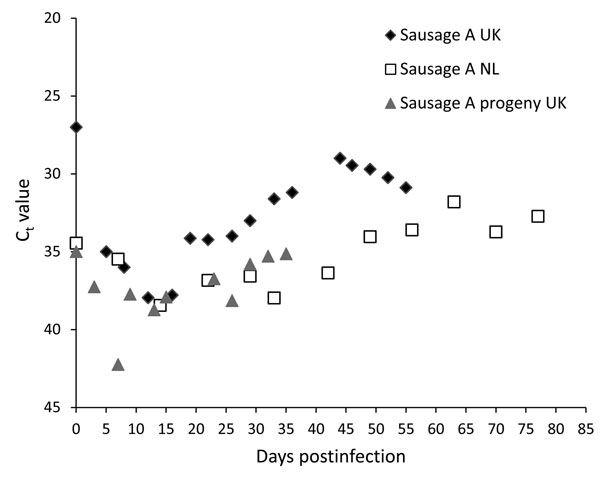Volume 19, Number 2—February 2013
Dispatch
Hepatitis E Virus in Pork Liver Sausage, France
Figure 1

Figure 1. . Cycle threshold (Ct) values detected by real-time reverse transcription PCR for hepatitis E virus–positive supernatant of 3D cells infected with homogenate of pork sausages from France. Diamonds indicate testing of sausage A in the United Kingdom; squares indicate testing of sausage A in the Netherlands; triangles indicate testing of progeny of sausage A in the United Kingdom.
Page created: January 22, 2013
Page updated: January 22, 2013
Page reviewed: January 22, 2013
The conclusions, findings, and opinions expressed by authors contributing to this journal do not necessarily reflect the official position of the U.S. Department of Health and Human Services, the Public Health Service, the Centers for Disease Control and Prevention, or the authors' affiliated institutions. Use of trade names is for identification only and does not imply endorsement by any of the groups named above.